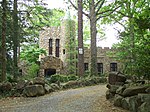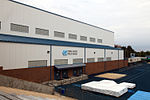Chapel of the Cross (Chapel Hill, North Carolina)
19th-century Episcopal church buildingsBuildings and structures in Chapel Hill-Carrboro, North CarolinaChurches completed in 1848Churches in Orange County, North CarolinaChurches on the National Register of Historic Places in North Carolina ... and 8 more
Episcopal church buildings in North CarolinaGothic Revival church buildings in North CarolinaHistoric American Buildings Survey in North CarolinaNRHP infobox with nocatNational Register of Historic Places in Orange County, North CarolinaThomas U. Walter church buildingsTourist attractions in Chapel Hill-Carrboro, North CarolinaUniversity and college chapels in the United States

Chapel of the Cross is a parish of the Episcopal Church of the United States in Chapel Hill in the Diocese of North Carolina. It is the spiritual home to more than 1,600 communicants, including numerous students studying at the University of North Carolina at Chapel Hill.
Excerpt from the Wikipedia article Chapel of the Cross (Chapel Hill, North Carolina) (License: CC BY-SA 3.0, Authors, Images).Chapel of the Cross (Chapel Hill, North Carolina)
Park Place,
Geographical coordinates (GPS) Address Nearby Places Show on map
Geographical coordinates (GPS)
| Latitude | Longitude |
|---|---|
| N 35.916111111111 ° | E -79.044166666667 ° |
Address
Park Place
27514
North Carolina, United States
Open on Google Maps









